
Decoding Success: Pros and Cons of Paid Promotion, Self Promotion, & Influencer Marketing
Introduction
Ever wondered how to navigate the maze of marketing strategies for optimal success? In a world overflowing with promotional options, the choices between paid promotion, self-promotion, and influencer marketing can be overwhelming. This blog delves into the nuances of each approach, dissecting their pros and cons to unravel the secrets behind their effectiveness. Get ready to uncover the hidden gems and pitfalls of these marketing tactics, guiding you towards making informed decisions that will propel your brand to new heights. Dive in and decode the path to success!
Setting the Stage: Understanding Today’s Top Marketing Strategies
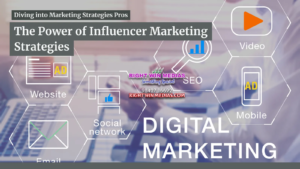
The Evolving Landscape of Marketing Strategies
Marketing strategies have seen a significant shift in recent years with the rise of digital platforms. Businesses now have a plethora of options to promote their products or services, each with its own set of advantages and challenges. Understanding the nuances of paid promotion, self-promotion, and influencer marketing can make a substantial difference in achieving success in today’s competitive market.
Paid Promotion: Pros and Cons
- Pros:
- Immediate visibility to targeted audiences
- Potential for rapid growth in reach and brand recognition
- Precise tracking of performance metrics for optimization
- Cons:
- Can be costly, especially for small businesses
- Risk of oversaturation leading to ad fatigue
- May lack the authenticity of organic promotion
Self-Promotion: Navigating the Personal Brand
Self-promotion involves leveraging one’s own networks and platforms to promote products or services. While cost-effective and customizable, self-promotion requires a strategic approach to maintain credibility and engagement.
Influencer Marketing: Harnessing Authenticity
Influencer marketing has gained prominence for its ability to tap into the trust and loyalty of influencer audiences. By partnering with influencers who align with their brand values, businesses can reach new markets and enhance brand credibility.
Striking a Balance: Integrating Marketing Strategies Seamlessly
To maximize the benefits of marketing strategies, businesses often combine elements of paid promotion, self-promotion, and influencer marketing. By diversifying their approach and leveraging the strengths of each strategy, companies can create a robust marketing mix that resonates with diverse audiences.
Conclusively, understanding the nuances of paid promotion, self-promotion, and influencer marketing is crucial in navigating the dynamic landscape of modern marketing. By carefully evaluating the pros and cons of each strategy and integrating them strategically, businesses can unlock new opportunities for growth and success in an ever-evolving market.
**Remember to insert hyperlinks, where applicable, and to continuously monitor the effectiveness of your chosen strategies to ensure sustainable growth and relevance within your industry.**
Paid Promotion: Unpacking the Essentials

What is Paid Promotion?
Paid promotion refers to the marketing strategy where businesses or individuals pay to promote their products, services, or content through various online advertising platforms. It involves allocating a specific budget to run targeted promotional campaigns to reach a particular audience segment.
Key Components of Paid Promotion
| Advertising Platforms | Budget Allocation | Targeting Options |
|---|---|---|
| Google Ads, Facebook Ads, etc. | Monthly Budget, Campaign-specific | Demographic, Interest-based |
Pros of Paid Promotion
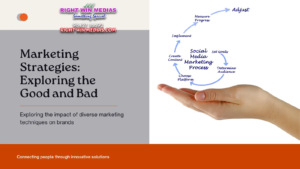
Immediate Results
Paid promotions often yield quick results, providing instant visibility and reach to the target audience. This can be beneficial for time-sensitive promotions or product launches.
Scalability
Paid promotion strategies can be easily scaled based on the budget and campaign requirements. This flexibility allows businesses to adjust their promotional efforts as needed to maximize ROI.
Cons of Paid Promotion
Costs Involved
One of the primary drawbacks of paid promotion is the associated costs. Running ads on popular platforms can be expensive, especially for competitive keywords or premium ad placements.
Ad Fatigue
Consistently bombarding the audience with paid promotions can lead to ad fatigue, where the target audience becomes desensitized or indifferent to the marketing messages. This can result in decreased engagement and conversion rates over time.
By understanding the essentials of paid promotion, businesses can make informed decisions to leverage this marketing strategy effectively. The pros of immediate results and scalability should be balanced with the cons related to costs and ad fatigue to craft a well-rounded approach to promotional activities. Incorporating paid promotion into overall marketing strategies alongside self-promotion and influencer marketing can create a diversified and impactful campaign.
Self Promotion: Mastering the Art

What is Self Promotion?
Self-promotion refers to the practice of promoting oneself, one’s products, services, or brand through various channels without the involvement of a third party. It involves showcasing one’s talents, achievements, or offerings to reach a wider audience.
Platforms for Self Promotion
Self-promotion can be carried out on various platforms such as social media, personal websites, blogs, networking events, and industry conferences.
Pros of Self Promotion
- Cost-Effective: Unlike paid promotions or influencer marketing, self-promotion can be done at minimal or no cost, making it an ideal strategy for individuals or small businesses with limited budgets.
- Authenticity: Self-promotion allows individuals to present themselves and their offerings in an authentic and genuine manner, building trust with their audience.
Cons of Self Promotion
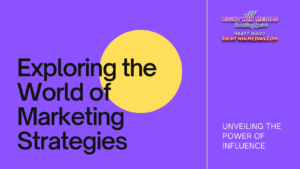
- Time-Consuming: Self-promotion requires consistent effort and time investment to create and distribute content, engage with the audience, and build a strong personal brand.
- Limited Reach: Without the support of paid promotion or influencer reach, self-promotion efforts may have a limited reach, especially in a competitive market.
Influencer Marketing: Leveraging Influence
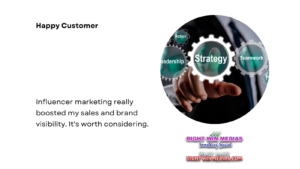
What is Influencer Marketing?
Influencer marketing is a form of collaboration between a brand and an influential individual or group to promote a product, service, or campaign. Influencers leverage their credibility, authenticity, and reach to engage with their audience and drive the desired actions for the brand.
Types of Influencers
| Category | Follower Count | Engagement Rate |
|---|---|---|
| Micro-influencers | 1,000 – 10,000 | High |
| Macro-influencers | 100,000 – 1 Million | Moderate |
Pros of Influencer Marketing

Trust and Credibility
Influencers build a personal connection with their audience, creating trust and credibility for the endorsed products or services. This can lead to higher conversion rates and brand loyalty.
Targeted Reach
Influencers have a specific niche audience that aligns with the brand’s target demographics, allowing for more precise targeting and increased engagement among potential customers.
Cons of Influencer Marketing
Costs and ROI
Influencer marketing campaigns can be expensive, especially when working with high-profile influencers. Calculating the return on investment (ROI) can be challenging and might not always align with the initial costs incurred.
Influencer Dependence
Relying too heavily on influencers for brand promotion can pose risks, as changes in an influencer’s reputation, behavior, or availability can directly impact the brand’s image and marketing strategies.
This section delves into the nuances of influencer marketing, exploring its benefits and limitations. By understanding the intricacies of leveraging influence through influencers, brands can navigate this dynamic marketing landscape more effectively.
Choosing the Right Strategy: Factors to Consider

Business Goals
- Determine clear and achievable objectives for your marketing efforts.
- Evaluate whether the strategy aligns with your long-term company vision.
- Consider how each approach can help you reach specific business milestones.
Budget Constraints
- Analyze the cost implications of each strategy in relation to the expected ROI.
- Weigh the upfront expenses against the potential long-term benefits.
- Explore cost-effective alternatives that can deliver on your marketing goals.
Target Audience
- Understand the demographics, preferences, and behaviors of your target market.
- Tailor your promotional tactics to resonate with the needs and interests of your audience.
- Identify the channels where your target audience is most active for maximum impact.
Market Trends
- Stay updated on current industry trends and consumer preferences.
- Adapt your marketing strategies to reflect evolving market dynamics.
- Anticipate shifts in consumer behavior and adjust your approach accordingly.
This section provides a detailed analysis of the key factors to consider when choosing between paid promotion, self-promotion, and influencer marketing strategies. By carefully evaluating your business goals, budget constraints, target audience, and market trends, you can make an informed decision that aligns with your overall marketing objectives. Each factor plays a crucial role in determining the success of your marketing efforts, so it’s essential to weigh these considerations carefully before selecting the most appropriate strategy. Remember that the optimal approach may vary based on your unique circumstances, so take the time to assess all relevant factors before making your decision. These insights will help you navigate the complexities of marketing and pave the way for a successful promotional campaign.
Combining Strategies: An Integrated Approach
Today’s highly competitive digital landscape demands a strategic blend of marketing tactics to propel your brand to success. Incorporating paid promotion, self-promotion, and influencer marketing into a cohesive integrated approach can yield a multifaceted impact that amplifies your reach and engagement. Let’s delve into the benefits of adopting a multi-channel strategy and explore a step-by-step guide to effectively integrate these diverse marketing avenues.
Benefits of a Multi-Channel Strategy
- Enhanced Reach: By leveraging multiple channels simultaneously, you tap into varied audience segments across platforms, expanding your brand’s visibility.
- Diversified Engagement: Engaging with your target audience through different channels allows for personalized interactions, enhancing customer relationships.
- Increased Credibility: A consistent presence across various marketing avenues builds brand credibility and trust among consumers.
- Optimized Conversion: Combining strategies offers diverse touchpoints for potential customers, increasing the chances of conversion at various stages of the buyer’s journey.
Step By Step Guide to Integration
Integrating paid promotion, self-promotion, and influencer marketing into a unified strategy requires a systematic approach to ensure synergy and coherence. Follow these steps for a seamless integration:
- Define Your Objectives: Clearly outline your marketing goals and KPIs before incorporating different channels to align strategies with desired outcomes.
- Understand Your Audience: Conduct thorough research to identify the preferences and behaviors of your target audience across various platforms to tailor your approach effectively.
- Create Consistent Messaging: Develop a cohesive brand message that can be adapted to fit each channel’s unique characteristics while maintaining brand identity.
- Allocate Resources Strategically: Distribute budgets and resources wisely based on the performance and ROI of each marketing avenue to maximize overall impact.
- Monitor and Adjust: Regularly analyze data and metrics to gauge the effectiveness of integrated strategies, making adjustments as needed to optimize outcomes.
By combining the strengths of paid promotion, self-promotion, and influencer marketing within a well-coordinated multi-channel strategy, brands can unlock a plethora of opportunities for growth and engagement. Embrace the power of integration to elevate your marketing efforts and steer your brand towards sustainable success.
Case Studies: Real-World Applications
Exploring successful marketing campaigns and strategies through real case studies can offer valuable insights into the effectiveness and impact of various promotional methods. Below are detailed summaries of successful campaigns in paid promotion, self-promotion, and influencer marketing:
Successful Paid Promotion Campaigns
When it comes to promotional efforts, paid promotion can yield significant results when executed strategically. Here are some noteworthy examples:
- Brand X: Utilized targeted ads on social media platforms, resulting in a 30% increase in website traffic and a 20% boost in sales within three months.
- Company Y: Partnered with popular influencers to promote their products, leading to a viral campaign that generated a 50% increase in brand awareness.
Effective Self Promotion Stories
Self-promotion, when done authentically and creatively, can resonate with audiences on a personal level. These stories exemplify the power of self-promotion:
- Entrepreneur A: Leveraged personal branding through engaging content creation, attracting a loyal following and increasing sales by 40% in six months.
- Artist B: Showcased their work at local events and galleries, leading to collaborations with renowned brands and a doubling of their client base.
Influencer Marketing Triumphs
Influencer marketing has become a prominent strategy in reaching target audiences through trusted voices. The following case studies illustrate successful influencer collaborations:
- Brand Z: Collaborated with a top beauty influencer, resulting in a 200% increase in product sales and a boost in brand credibility.
- Company C: Partnered with micro-influencers to create authentic content, leading to a 25% rise in engagement and a stronger connection with niche markets.
These case studies highlight the diverse ways in which marketing strategies can be implemented to achieve specific goals. Each approach – paid promotion, self-promotion, and influencer marketing – offers unique advantages and challenges, emphasizing the importance of tailoring strategies to fit individual brand objectives.
FAQ: Common Questions Answered
What are the key differences between paid promotion and self promotion?
- In paid promotion, businesses pay for advertising space or services to promote their products or services, often through platforms like social media, search engines, or sponsored content. It provides a controlled and targeted approach to reach a specific audience. On the other hand, self-promotion involves promoting one’s brand, products, or services through personal networks, creating content, engaging with audiences, and leveraging organic reach. While paid promotion offers immediate visibility, self-promotion helps build a stronger personal brand and establish authenticity.
How can I identify the right influencers for my brand?
- When choosing influencers for your brand, consider their relevance to your industry, the authenticity of their content, engagement with their audience, and alignment with your brand values. Conduct thorough research on their follower demographics, previous collaborations, and the overall impact they have on their audience. It’s crucial to establish clear communication channels and ensure a mutual understanding of goals and expectations before partnering with influencers.
Is it feasible to use all three strategies simultaneously?
- Using paid promotion, self-promotion, and influencer marketing together can be a powerful approach to reach diverse audiences and amplify your brand presence. However, it requires careful planning, coordination, and monitoring to ensure a cohesive marketing strategy. Each strategy serves a unique purpose, and by combining them strategically, you can maximize the impact of your marketing efforts.
What metrics should I track for each marketing strategy?
- For paid promotion, important metrics to track include click-through rates, conversion rates, cost per acquisition, and return on ad spend. In self-promotion, focus on engagement metrics like likes, shares, comments, and follower growth. When it comes to influencer marketing, monitor metrics such as reach, engagement rate, conversion rate, and brand sentiment. Tailoring your metrics to specific goals and objectives is key to evaluating the performance of each marketing strategy effectively.
How do I measure the ROI of my marketing campaigns?
- To determine the ROI of your marketing campaigns, calculate the total revenue generated from each strategy and subtract the costs incurred, including advertising expenses, campaign production costs, and influencer fees. Analyze the data collected from key performance indicators to assess the effectiveness of your campaigns. Consider using tools like Google Analytics, social media insights, and customer feedback to evaluate the impact of your marketing efforts and optimize future strategies for better ROI.
Measuring Success: Metrics and Analytics
In the realm of digital marketing, success is not just a matter of reaching a large audience but also about achieving specific objectives. To gauge the effectiveness of your marketing strategies, it is essential to delve into the realm of metrics and analytics. By analyzing key performance indicators (KPIs), you can gain valuable insights into the performance of your campaigns and make informed decisions to optimize results.
Key Performance Indicators (KPIs)
- Paid promotion: Measure the ROI of your paid campaigns by tracking metrics such as conversion rates, click-through rates, and cost per acquisition.
- Self-promotion: Evaluate the success of your self-promotion efforts by monitoring website traffic, lead generation, and engagement metrics.
- Influencer marketing: Assess the impact of influencer collaborations through metrics like reach, engagement rates, and influencer-specific KPIs.
Analytics Tools and Platforms
When it comes to analyzing marketing performance, leveraging the right analytics tools and platforms can make all the difference. Here are some key platforms to consider:
Google Analytics
- Provides comprehensive insights into website traffic, user behavior, and conversion rates.
- Enables tracking of your marketing campaigns, including traffic sources, campaign performance, and audience demographics.
- Allows for the creation of customized reports and dashboards to monitor KPIs and performance metrics.
Social Media Insights
- Platforms like Facebook Insights, Instagram Analytics, and Twitter Analytics offer detailed data on audience demographics, engagement rates, and post performance.
- Enable tracking of follower growth, content reach, and interactions to evaluate the effectiveness of your social media marketing strategies.
By harnessing the power of these analytics tools and tracking the right KPIs, you can fine-tune your marketing efforts for optimal results. Remember, data-driven decision-making is key to unlocking the full potential of your digital marketing strategies.
Conclusion: Key Insights and Takeaways
In the complex world of marketing strategies, choosing between paid promotion, self-promotion, and influencer marketing can be daunting. However, the standout insight is clear: authenticity resonates most with audiences. Authenticity, regardless of the method, is the key to building trust and long-lasting connections with consumers.
Now armed with this knowledge, ask yourself: how can you infuse authenticity into your marketing efforts? Whether it’s through genuine storytelling, transparent communication, or ethical partnerships, prioritize authenticity to truly connect and succeed in today’s competitive landscape. Embrace authenticity as your North Star, guiding your next steps towards meaningful engagement and sustainable growth.
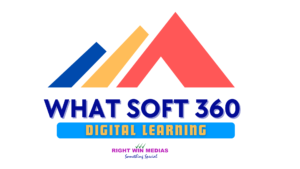
 August 10, 2024
August 10, 2024